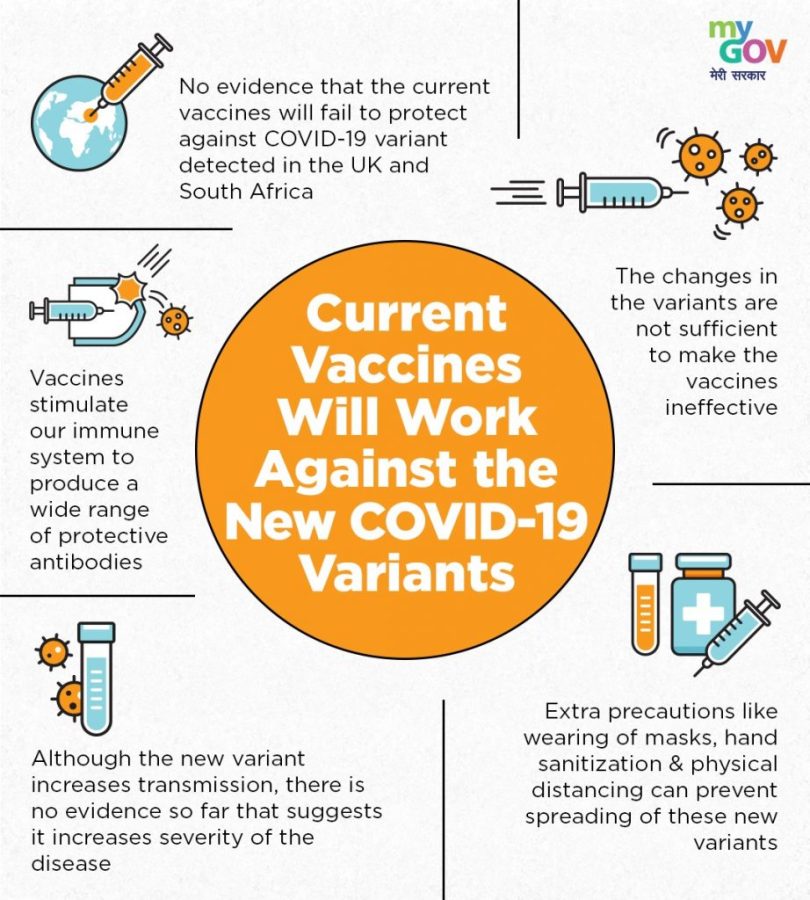The Omicron variant: what it is and what it entails for the United States
An infographic on the effectiveness of the COVID-19 vaccine in light of new variants.
Opinions expressed in editorials on The Central Trend are the view of the individual writer and are not the opinion of the entire staff of The Central Trend or the Forest Hills Central staff or administration.
Omicron has categorically been identified as the Greek alphabetical symbol for 15. However, as of the past few weeks, this innocent letter has slowly morphed into the name for the newest COVID-19 variant—one that, like other variations, promises new regulations and cases across the United States.
As of two weeks ago, South African scientists identified the Omicron variant within certain individuals tested. The variant—which has yet to be determined as more or less transmittable or severe than others—was deemed one of concern by the World Health Organization on Friday, Nov. 26.
Since its announcement to the public, Omicron has been detected within Europe and North America, appearing in at least 12 U.S. states as of Friday afternoon. First recognized in California, cases have additionally been found in Colorado, Hawaii, Louisiana, Maryland, Minnesota, Missouri, Nebraska, New Jersey, New York, Pennsylvania, and Utah (CNN).
Three days ago, Governor Kathy Hochul and Mayor Bill de Blasio of New York City announced in a news conference that the state had five confirmed cases (The New York Times). Still unsure as to the true nature of the variant, no major shutdowns or precautions have been put into place to outwardly prevent it.
Furthermore, health officials have announced that the Delta variant—which first struck the United States this summer—is still their highest priority and the version with the greatest infection rates.
“We now have about 86,000 cases of Covid right now in the United States being diagnosed daily, and 99.9% of them, the vast majority of them, continue to be Delta,” said the director of The US Centers for Disease Control and Prevention, Dr. Rochelle Walensky, for CNN on Friday.
Unlike much of the uncertainty still surrounding this new Omicron variant, what undoubtedly remains the case is the measures Michiganders can take to prevent it. All evidence points to the vaccine still working to decrease transference, and, by receiving all rounds of the COVID-19 shot, citizens can successfully lessen their chances of contracting the disease.
Moreover, in the likelihood that a fully vaccinated person still catches COVID-19, the antibodies within the shot have been proven to mitigate symptoms. According to Walensky, one Minnesotan who tested positive for the Omicron variation was fully vaccinated, and they had mild maladies that resolved themselves swiftly.
By getting vaccinated and continuing to mask and social distance while in public, we can all do our part to slow the spread of COVID-19 and prevent the Omicron variant from further damaging our national health landscape.

Jessie Warren is a senior, and this will be her second and final year as a staff member of The Central Trend. Ever eager to write, she finds a sort of...

























































































